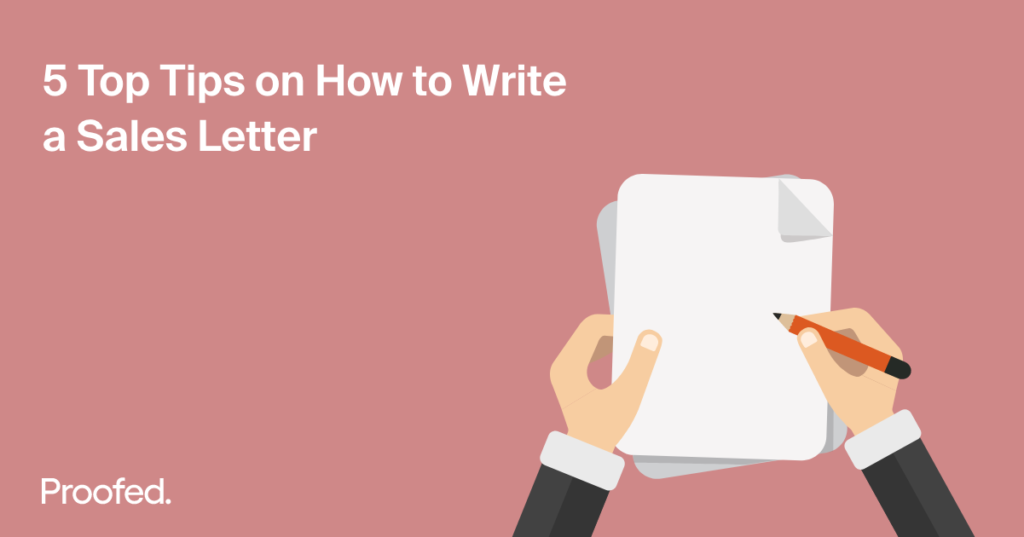A well-written sales letter is an excellent way to make prospective buyers aware of your product or services. But how do you write a letter that converts interest to sales? We have five top tips you can use:
- Craft an attention-grabbing headline.
- Set out a solution to a problem the reader may face.
- Include customer testimonials to prove your credentials.
- Finish on a strong call to action so the reader knows what to do next.
- Make sure you proofread your sales letter carefully before sending it out.
For more on all the tips above, read our full advice below.
1. Use an Attention-Grabbing Headline
The headline is the first thing that people will read in your sales letter, so you need it to grab their attention. And you have two common options here.
One is to briefly set out the main selling point of your product or service, such as a feature or benefit. For instance, a sales letter for Proofed’s business proofreading services might start with something like:
Good writing is good for business. Make sure yours is perfect with Proofed.
Alternatively, you can identify a pain point (i.e., a problem or limitation) your customer may be facing and use this to create a sense they need your product or service. For instance, we could say:
Are typos in copy losing you sales? Proofed can help.
Since the headline is so important, try writing a few and pick the one you think will resonate most with your target customers.
2. Set Out a Solution
To draft an effective sales letter, make a list of problems your target customer may face. For each one, note how your product or service provides a solution. You can then use this to write your letter.
The main body of your letter should set out each problem you’ve identified and explain the benefits your product or service offers. In addition:
Find this useful?
Subscribe to our newsletter and get writing tips from our editors straight to your inbox.
- Make sure to write clearly and concisely, avoiding unnecessary jargon.
- Use a friendly but persuasive tone.
- Use bullet points to set out details and break up the page visually.
Typically, it’s best to stick to one or two key problems and solutions so you don’t overwhelm the reader with information. But you can write a longer letter if it is appropriate (e.g., for a high-cost product where the reader may want to know more before they consider making a purchase).
3. Customer Testimonials
Including customer testimonials shows readers that you deliver on the promises you make. As such, including a few short quotes from satisfied customers that back up your claims creates a sense of trust.
If you’re selling a new product or service and don’t have any testimonials to draw on yet, think about other ways to convince the customer to give your product or service a try (e.g., a free trial or a money-back guarantee).
4. Call to Action
Every good sales letter should end on a strong call to action (CTA) that tells your customer exactly what to do next. To write a strong CTA:
- Keep it short, simple, and specific (no more than a single sentence).
- Say exactly what you want the customer to do and how they will benefit (e.g., “Sign up today to make sure your content is always error free”).
- Create a sense of urgency by using the imperative mood and, if relevant, stress that the offer is time-sensitive or that stocks are limited.
The key is making it easy for the reader to act on their interest.
5. Proofread Your Sales Letter
Errors in a sales letter look unprofessional and erode the trust you’ve tried to create. Thus, if you want your letter to be as persuasive as possible, you need to make sure it is perfect before you send it out.
You can do this yourself, but it is easy to miss mistakes when proofreading your own work. Consequently, we suggest hiring a professional proofreader.
At Proofed, for example, we have expert business proofreaders ready to help. And if you want to see what we can do before you buy, we even offer a free 500-word trial service. Sign up today to see how our editors could help you hone your sales letters and other business writing.



